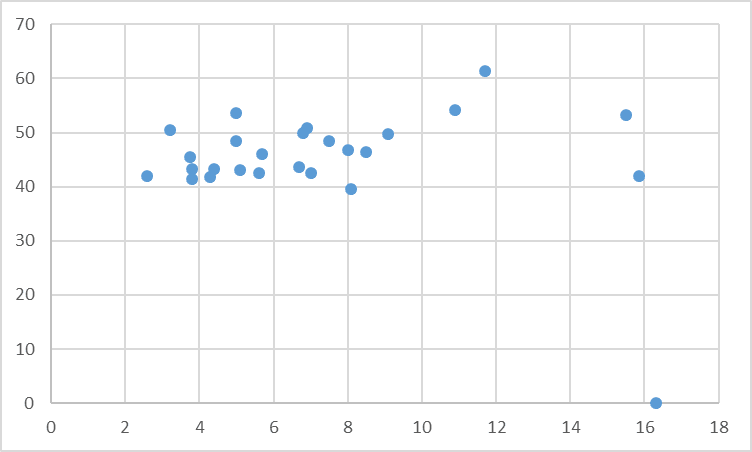Despite the government determining the minimum wage to be hiked to RM1,500 by May 1, 2022, there's still debate on whether the timing/quantum of the increase is appropriate. This is partly acknowledged by the government itself, with the qualification that it will not apply to micro enterprises with less than 5 employees.
So what's really appropriate? What's the safe level of minimum wage that will uplift low incomes while preserving employment?
The economics literature seems to have converged on roughly about 40%-50% of the average wage, or thereabouts, as the "safe" level, defined as the level of minimum wage where you don't get significant unemployment effects. As far as practice is concerned, that appears to be where most countries set their minimum wage. Take Europe for example:
The average is around 46% of the average wage, with a low of 39.5% (Latvia) and a high of 61.4% (Albania). This is what the scatter plot of the data looks like (y: % of average wage, x: % unemployment rate):
There's a wide range of unemployment numbers clustered around that 40%-50% minimum wage/average wage range, and no obvious relationship. Albania is obviously an outlier, but the overall picture suggests that unemployment is driven more by other things than the minimum wage alone. In any case, a true examination of the impact on unemployment will need to be a lot more sophisticated than a simple cross sectional comparison of international data.
Nevertheless, let's take that 40%-50% range as given, and where does that leave us? Based on the latest data from DOSM, the average wage is about RM2,933, which yields a safe maximum range for the minimum wage of between RM1,173 and RM1,466. That's...not exactly helpful.
Of course, you could assume that the 2 years intervening would result in average wages rising by about 10%, but Covid has put a damper on wage growth across the board. As of the latest data, wage levels have only just recovered to roughly where we were at the beginning of the pandemic in Feb-2020, so 2020-2021 should be considered lost years as far as wage growth is concerned. It's probably more appropriate then to use the 2019 average of RM3,224 instead, which gives a range of RM1,289 and RM1,612.
So far so good. If wages recover to 2019 levels (as appears to be happening from the incoming data this year), than a minimum wage of RM1,500 shouldn't have significant effects on employment, and it be relatively safe to go ahead.
So what about the pushback on SME implementation? That is deserving of a post of on its own.
Technical Notes:
1. European data from Eurostat, and national statistics offices
2. 2020 Wages and Salaries Survey from the Department of Statistics Malaysia





No comments:
Post a Comment